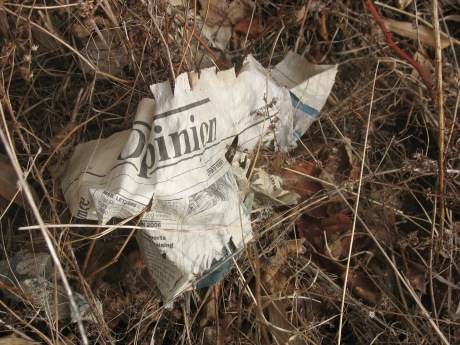thought process: visions of change
11 February 2011
1. Change is constant.
2. There are two basic types of change: change that brings some kind of patterned order, and change that is random, without recognizable pattern or order.
3. In human life, there are two basic types of emotional disposition directly related to the fact of change in the world: these are trust, and fear.
4. As human beings, we are constantly disposed toward the changing world with some degree of trust or fear. We can even be disposed toward our own changing disposition with trust or fear: “I trust that I am right to be afraid,” or “I fear I should not have trusted…”; “I trust that I was right to trust,” or “It frightens me that I am afraid of this.”
5. If we are to trust our trustfulness, or trust our fearfulness, this trust implies what was said before: both patterned order and randomness characterize the change in the world. If everything were predetermined (if we could discover laws enabling us to predict moment-to-moment all we thought was random), trust would be meaningless (as would fear) for there would no reason for uncertainty. Likewise, if everything were a matter of random chaos, trust (and fear) would also be meaningless, for we would have no patterns of expectation to base them on.
6. So trust and fear are only credible in a world in which it is rational to be both expectant and uncertain.
7. This fluctuating disposition toward future change can be understood as a unique form of vision: it is an envisioning of something that is not yet.
8. What enables us to credibly expect/envision some future event is a history of similar events in the past, following a patterned, relatively predictable, order. So, for instance, we expect the sun to rise and set, the changing of the seasons to follow their usual order, our blood to continue to circulate, cross-traffic to stop when it has a red light, empires to fall and be replaced by new ones, and so on.
9. Because everything is changing all the time, we are unable to follow all the events of the world and so the discovery of as-yet unknown patterns we might reasonably trust, grounding our vision on their ordered unfolding, is momentous and rare. Whenever we discover a new pattern in the world, it has an irreversible impact on our vision of the future from then on.
10. So our vision of the future — what we believe we can expect, and what remains uncertain — is directly related to the events we choose to follow, and the patterns of order we discover. The greater the number of patterns we are aware of, the more richly and deeply grounded will be our vision.
11. Events can take up a large or small amount of space, and a long or short amount of time. So our ability to follow different events depends on our understanding of what an event might look like. Is an event an hour long? A day or a week or a year or a millennium? There are good reasons to consider our own understanding of what an event looks like. As R.G. Collingwood suggested: Because it takes longer to create something than to destroy it, the shorter time frame we allow for an event to take place, the more likely we are to perceive destruction (rather than creation, ie. the unfolding of orderly patterns) as characterizing the ever-changing world.
12. Our fluctuating disposition of trust and fear as regards coming change, then, is shaped by the patterns of events we are able to recognize, and the future we are able to envision thanks to what we have discovered.
13. For instance, to use what has happened in Egypt in the last few minutes, or the last 18 days [what time frame do we give to events like this?], the possibility of effective peaceful protest gains ground in our consciousness of what is possible…
~*~***~*~
Question: If the order and shape we bring to our own lives is the fruit of trusted patterns of change, is it possible to suggest — at least metaphorically — that all life develops according to “trusted” patterns of expected change? In other words, is it possible to consider that the power to envision and shape the future which humans have (as a result of our ability to recognize and trust patterns of events) is “simply” a highly sophisticated form of the same process of creation which brings all living structure into being?


